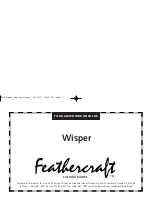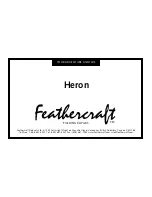
21
engine sounds or the boat feels will presage a problem. Your early attention may prevent a more
serious problem.
If you should strike an underwater object, bring the throttle to neutral and stop the engine.
Inspect the lower unit for damage. If none is apparent, proceed as before but heighten
your awareness of the engine and its operation to make sure a problem has not gone
undetected.
9.4 Towing or Being Towed
Sooner or later your will have the misfortune of having to be towed in or needing to tow someone back
to a safe landing. It is important that this be done properly so that a difficult situation does not
become worse. This comes under a longstanding, unwritten law of the sea that one boater will aid
another in time of distress. The 1971 Boating Safety Act grants protection to those assisting others at
sea as ”Good Samaritans” and absolves them of civil liability rising from the aid being provided.
When being towed, it is best to have a line passed from the tow boat to the one being towed, assuming
the towing boat has a line of adequate size and length. The tow boat should also tow the disabled
vessel from as close to amidships as possible. This reduces the tendency to yaw. If
possible, the towing boat should use a bridle attached to the two stern ski tow eyes.
The vessel being towed should attach the tow line to the bow eye that holds the boat
onto the trailer. This provides an optimal tow position and a strong tow point. Have
the occupants of the boat being towed sit aft of amidships, but not all in the stern.
Attention should be given so the boat remains balanced and on an even keel. Some
boats tow better with the engine tilted out of the water, others need the engine to act
as a rudder to be able to maintain a straight line. Start with the engine tilted. If that
does not work well lower the engine until it is about perpendicular.
You should never attempt to plane off the boat being towed.
9.5 Stopping the Boat
Gradually bring the controls back to the low forward position and allow the boat to gradually slow
down. After the boat has dropped into the displacement mode, shift to the neutral position. If you have
been running the boat hard for some time, allow the engine to idle for several minutes to gradually cool
down. After docking and securing the boat, raise the trim tabs to the fully upright position and turn off
the ignition.
9.6 Docking
Safe docking keeps your boat from being damaged and is an indicator of a capable and
knowledgeable captain. There are many docking maneuvers, which will be done while boating; only the
basics will be discussed here. Several constants to always use as guides while docking:
Perform docking at idle or no wake speeds. Always try to come into wind or current, whichever is
stronger. This allows you to use the natural forces on your boat to act as a natural brake. The skipper is
free to use the boat’s power to control speed and direction.
Summary of Contents for 240IS
Page 1: ...240IS 240IS InShore Center Console OWNER ASSISTANCE MANUAL Revised 2014...
Page 30: ...28 Appendix 240IS...
Page 31: ...30...
Page 32: ...31 Hydraulic Steering System...
Page 33: ...32...
Page 34: ...33...
Page 35: ...34...
Page 36: ......
Page 37: ......
Page 38: ......
Page 39: ......
Page 40: ......
Page 41: ......
Page 49: ...vi Selection Guide...
Page 55: ...1 6 Selection Guide...
Page 59: ...2 4 Selection Guide...
Page 85: ...4 8 Selection Guide...
Page 135: ...11 2 Selection Guide...
















































